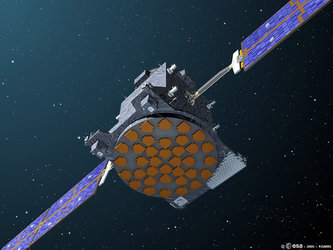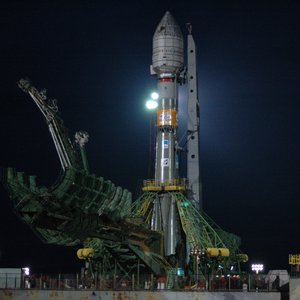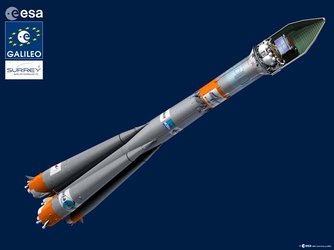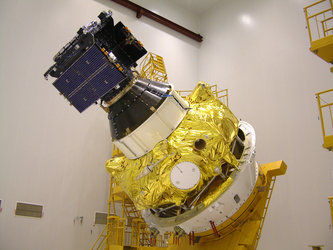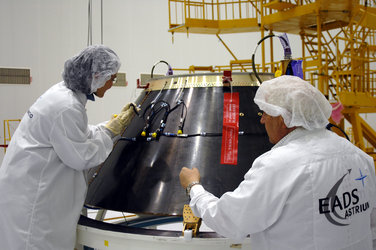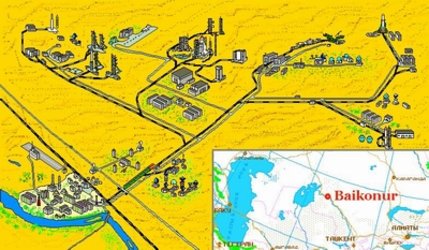First Galileo signals transmitted by GIOVE-A
ESA PR 03-2006. The GIOVE-A satellite is in good health and started transmitting the first Galileo signals from medium Earth orbit on 12 January.
GIOVE-A was placed in orbit (altitude 23,260 km) by a Soyuz-Fregat rocket operated by Starsem on 28 December last from the Baikonur Cosmodrome. The prime contractor, Surrey Satellite Technology Limited, then successfully deployed the two 3.5 metre solar array panels, commissioned the satellite platform and prepared the payload for tests from its Mission Control Centre. These activities on GIOVE-A drew on the joint efforts of ground stations deployed at RAL (UK), Bangalore (India) and Kuala Lumpur (Malaysia) for uploading of the onboard computer software, deployment of the two solar panels and placing of the satellite in sun-acquisition mode.
All the platform systems underwent functional checks and the satellite was then put in its nominal Earth-pointing attitude and orbit control mode. This platform commissioning phase was successfully completed by 9 January.
On 10 January, payload commissioning started from the SSTL Mission Control Centre with the objective of verifying that all the units in the navigation payload were functioning properly.

On 12 January, the first Galileo navigation signals were transmitted by GIOVE-A. These were received and analysed by the Galileo receivers using the 25-metre diameter dish of the Chilbolton Observatory Facilities for Atmospheric and Radio Research (UK) and the ESA Station in Redu (Belgium). The various Galileo signal modes will now be generated sequentially using the various GIOVE-A payload chains. Payload commissioning activities are planned to be completed by mid-February.
Additional measurement campaigns will then be carried out to assess the medium earth orbit radiation environment, characterise the performance of the on-board clocks and perform signal-in-space experimentation.
Background information
GIOVE-A is the first element of the Galileo In-Orbit Validation phase. The pilot satellite marks the very first step towards full operability of Europe’s new global navigation satellite system, a partnership project involving the European Space Agency and the European Commission.
GIOVE-A’s mission is to secure use of the frequencies allocated by the International Telecommunications Union for the Galileo system, demonstrate critical technologies for the navigation payloads of future operational Galileo satellites, characterise the radiation environment of the orbits planned for the Galileo constellation and test the receivers on the ground.
Formerly known as GSTB-V2/A, the GIOVE A satellite is carrying two redundant, small-size rubidium atomic clocks built by Temex Neuchatel Time (Switzerland), each with a stability of 10 nanoseconds per day, the navigation L-band antenna built by Alcatel Alenia Space (Italy), and two signal generation units built by Alcatel Alenia Space (Italy) and SSTL (UK) respectively. This mission will be followed by that of the second satellite, GIOVE-B, which is to be built by Galileo Industries (Germany) in 2006.
Galileo will be Europe’s very own global navigation satellite system, providing a highly accurate and guaranteed positioning service under civilian control. It will be inter-operable with the two other systems: the US Global Positioning System and Russia’s Global Navigation Satellite. Galileo will deliver real-time positioning services with unrivaled accuracy and integrity.
For further information, please contact:
ESA Media Relations Division
Tel: +33(0)1.53.69.7155
Fax: +33(0)1.53.69.7690





